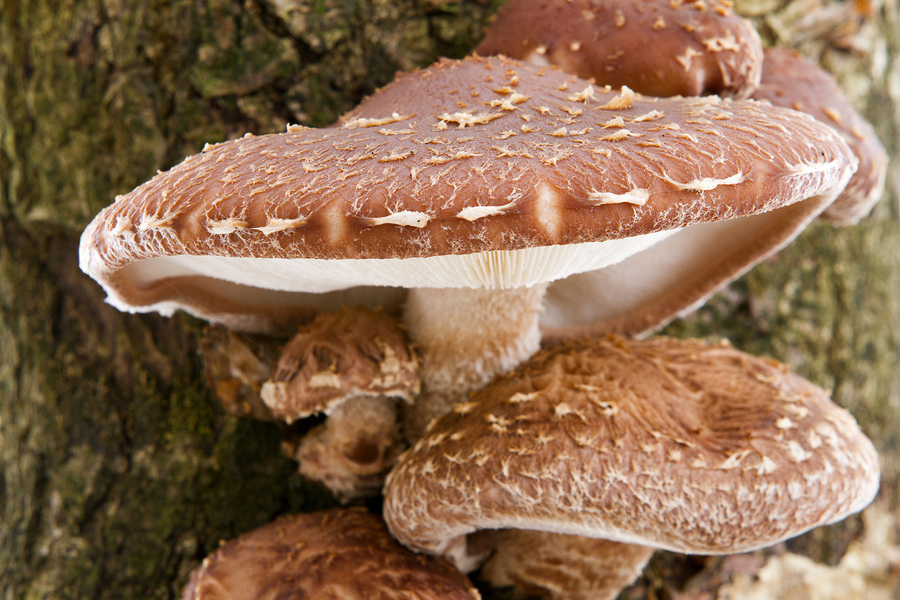Everybody knows that some mushrooms are edible. But not everybody knows that some mushrooms are medicinal . . . . And even fewer people know that mushrooms can be used to clean up industrial pollution.
A couple of years ago, I saw a presentation by a guy named Tradd Cotter. He’s a mushroom scientist and the owner of Mushroom Mountain in South Carolina. Tradd talked about collecting wild mushrooms, cultivating mushrooms at home, eating mushrooms, and using them medicinally.
The talk was great, and it left many of us feeling excited about growing some mushrooms of our own. I had been curious about growing mushrooms before, but I hadn’t really gotten around to doing the research or setting things up.
But Tradd ensured us all that if you can keep plants alive in a garden, you can definitely keep mushrooms alive on a log.
Here, he shows you how easy it is to get started. (Seriously! This video is 1-minute long!)
Growing Mushrooms on Logs
As luck would have it, there is a young hackberry tree growing too close to our house that needs to be removed. Much of the wood will be the right size, so rather than pay for a chipper, we’re going to cut it into pieces a few feet long. It should make a good-sized stack of wood for growing mushrooms.
I still had a few questions about timing, moisture, and sun—so I searched around for a reference and found this great resource from the North Carolina Cooperative Extension. They shared some helpful recommendations about the quality of wood you use and the spacing of the holes for spawning. And they included a glossary in case there are words you don’t know yet.
Read/Download the Original PDF Here: “Producing Shiitake Mushrooms”
Learn More (Video): “6 Ways Mushrooms Can Save the World”
Benefits of Growing Mushrooms on Logs
Most mushrooms are not grown this way. Commercial mushrooms are mostly grown in plastic bags or bottles that are filled with sawdust or some other substrate. Those mushrooms are grown intensively in a climate-controlled environment. (If you want to see what that process looks like, see this other PDF from Penn State, here.)
Those commercial techniques allow growers to produce mushrooms consistently all year long. Growing in logs outside, you’ll be dependent on the weather conditions, and you’ll probably be limited to 3 harvests per year or less.
There are a few upsides to the homegrown method, however—growing mushrooms on logs produces fungi that are reputed to have better flavor, better shelf life, and more medicinal properties than commercially grown mushrooms.
How about you? Do you grow mushrooms at home? Share your best tips in the comments below!
(This is an updated version of an article that was originally published on June 10, 2o16.)








COMMENTS(5)
What type of wood logs should you use?
Hi Rob – NCSU recommends local hardwood, bark intact, 3-4 feet long and 4-8 inches in diameter. They say oak & sweet gum are good choices. I’m planning to use hackberry because that’s what I’ve got. They make some recommendations about how long you let the wood sit before you start spawning in the PDF above. Good luck!
Does anyone know if it matter if the log is not fresh but still has barks on it, i have a good sized i believe elm log, for Turkey tail mushroom plugs, that have been in the fridge for a couple months, hope they are still usable?
What kind of plugs is he putting into those logs? I have listened to it over and over and can’t figure out what he’s saying.
I’ve been scouting out locations to grow my mushrooms and looking at websites for ordering spawn plugs. This will be a great new addition to the yard!